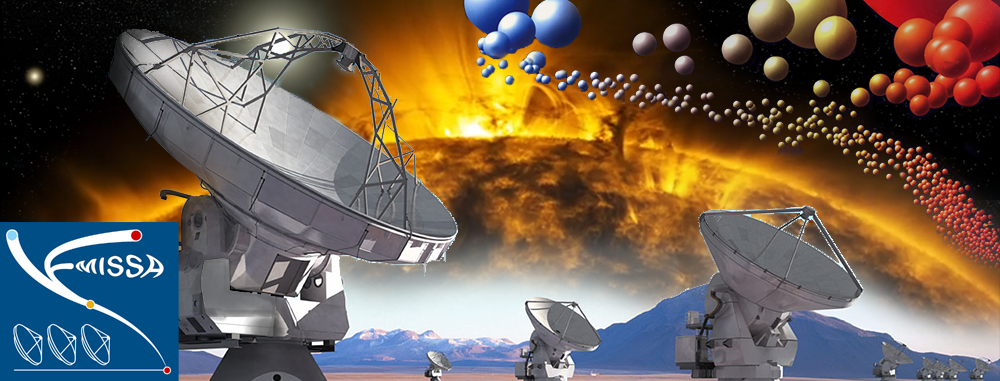About the project
The term “activity” describes a range of phenomena occurring in the outer layers (i.e. the atmosphere) of a star that result in variations of the observed intensity of the star and that are typically connected to the presence of magnetic fields.
The phenomena range from long-term variations as visible in the form of star spots to strong sudden changes due to flares. Unfortunately, the activity of the Sun and other stars remains poorly understood due to the difficulties with interpreting available observations. The Atacama Large Millimeter/sub-millimeter Array (ALMA), which became operational only a few years ago, now promises new means of observing stars and our Sun and thus advancing our understanding of stellar and solar activity.
ALMA is a telescope array located high in the Chilean Andes. It observes at wavelengths around one millimeter that are thus much longer than for visible light. Observing at these long wavelengths usually comes at the price of a much lower spatial resolution, or in other words, the level of details that can be seen.
ALMA is a technological leap forward and now enables observations of our Sun at a resolution that comes close to that of today’s solar telescopes for visible light. One of the main advantages is that ALMA can measure the temperature of the gas in the outer layers of the Sun, which is typically difficult to do with other telescopes.
In addition, ALMA observations of the Sun can reveal the three-dimensional structure of the gas and even the magnetic field in the outer. ALMA thus provides new means to observe and eventually understand the active nature of the Sun and other stars. The same tools can be applied to (spatially unresolved) observations of other stars, too.

Objectives
The aim of the EMISSA project is to exploit ALMA's novel capabilities for a re-evaluation of the activity of stars by means of a comparative solar-stellar study with the Sun serving as a fundamental reference.
Competences and tools
A sequence of state-of-the-art 3D computer models of the outer layers of stars including the Sun will be used to prepare and interpret new observations of the Sun and a selected sample of other stars with ALMA and other observatories.
Outcomes
This approach promises a new view on the activity of the Sun and other stars and the physical processes causing it.
Project period
Start - finish: October 2019 to September 2023
Financing
The EMISSA project is funded by the Research Council of Norway and the University of Oslo.
Cooperation
The project is part of ongoing research on solar/stellar research with ALMA at RoCS and is closely connected to the ERC-funded SolarALMA project and an ALMA Development Study.


